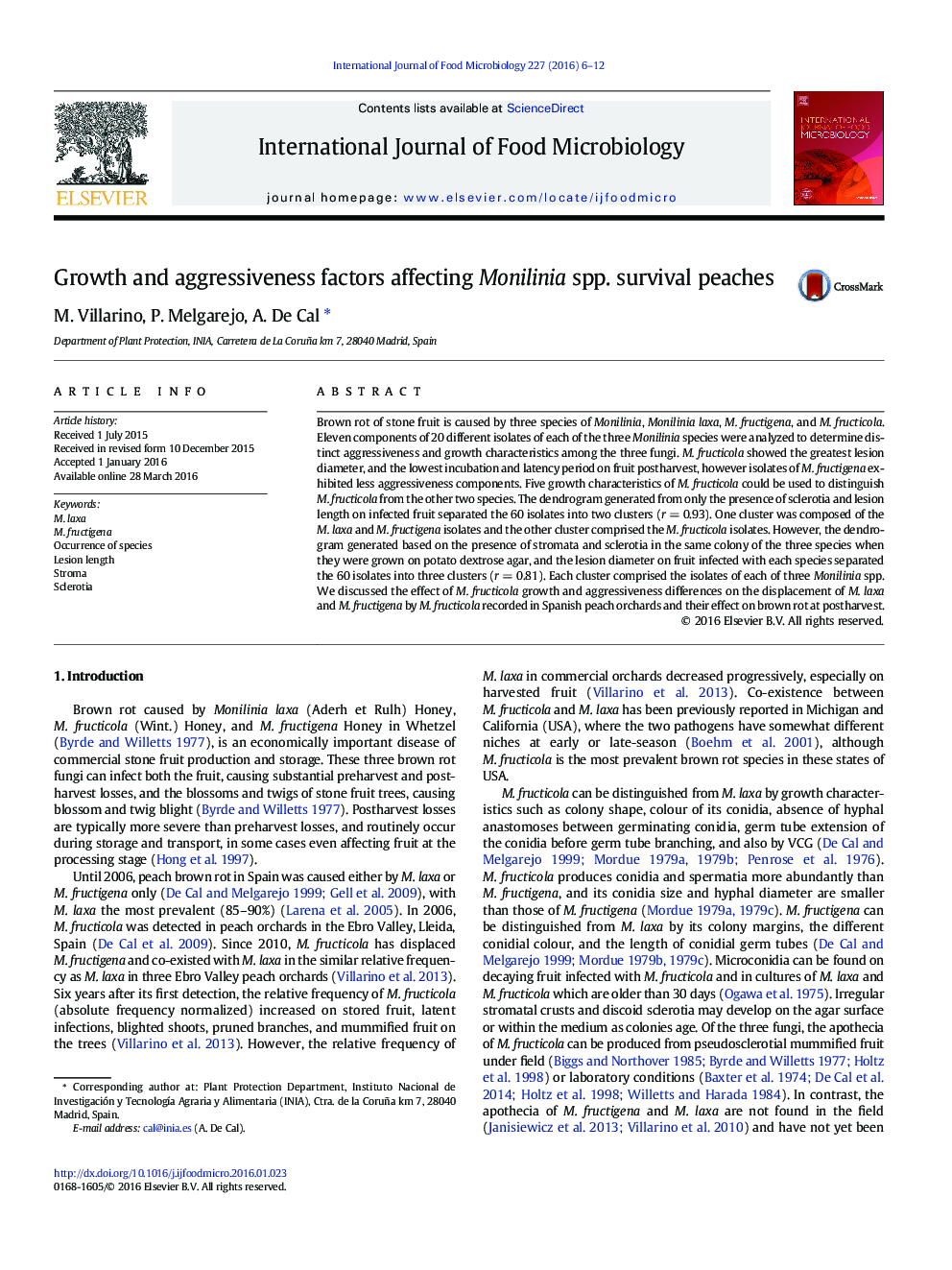| کد مقاله | کد نشریه | سال انتشار | مقاله انگلیسی | نسخه تمام متن |
|---|---|---|---|---|
| 6289790 | 1616556 | 2016 | 7 صفحه PDF | دانلود رایگان |
عنوان انگلیسی مقاله ISI
Growth and aggressiveness factors affecting Monilinia spp. survival peaches
دانلود مقاله + سفارش ترجمه
دانلود مقاله ISI انگلیسی
رایگان برای ایرانیان
کلمات کلیدی
موضوعات مرتبط
علوم زیستی و بیوفناوری
علوم کشاورزی و بیولوژیک
دانش تغذیه
پیش نمایش صفحه اول مقاله

چکیده انگلیسی
Brown rot of stone fruit is caused by three species of Monilinia, Monilinia laxa, M. fructigena, and M. fructicola. Eleven components of 20 different isolates of each of the three Monilinia species were analyzed to determine distinct aggressiveness and growth characteristics among the three fungi. M. fructicola showed the greatest lesion diameter, and the lowest incubation and latency period on fruit postharvest, however isolates of M. fructigena exhibited less aggressiveness components. Five growth characteristics of M. fructicola could be used to distinguish M. fructicola from the other two species. The dendrogram generated from only the presence of sclerotia and lesion length on infected fruit separated the 60 isolates into two clusters (r = 0.93). One cluster was composed of the M. laxa and M. fructigena isolates and the other cluster comprised the M. fructicola isolates. However, the dendrogram generated based on the presence of stromata and sclerotia in the same colony of the three species when they were grown on potato dextrose agar, and the lesion diameter on fruit infected with each species separated the 60 isolates into three clusters (r = 0.81). Each cluster comprised the isolates of each of three Monilinia spp. We discussed the effect of M. fructicola growth and aggressiveness differences on the displacement of M. laxa and M. fructigena by M. fructicola recorded in Spanish peach orchards and their effect on brown rot at postharvest.
ناشر
Database: Elsevier - ScienceDirect (ساینس دایرکت)
Journal: International Journal of Food Microbiology - Volume 227, 16 June 2016, Pages 6-12
Journal: International Journal of Food Microbiology - Volume 227, 16 June 2016, Pages 6-12
نویسندگان
M. Villarino, P. Melgarejo, A. De Cal,